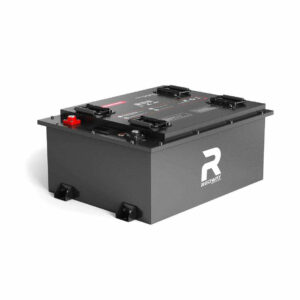What Are the Steps to Replace a 2013 Ford Escape Battery?
Replacing a 2013 Ford Escape battery involves locating the battery, disconnecting terminals, removing the hold-down clamp, installing a Group 96R battery, and reconnecting cables. Always prioritize safety by wearing gloves and eye protection. Costs range from $150–$350, depending on battery type and labor. This process typically takes 15–30 minutes for DIYers.
What Happens if a LiFePO4 Battery Gets Wet?
How Do You Identify a Failing Battery in a 2013 Ford Escape?
Common signs include slow engine cranking, dim headlights, illuminated battery warning lights, and frequent jump-starts. Testing voltage with a multimeter (below 12.4V indicates weakness) or using auto store diagnostic services confirms battery health. Age beyond 3–5 years also signals replacement needs.

Battery degradation often accelerates in vehicles with multiple electronic accessories. For example, drivers using dashcams or aftermarket sound systems may experience faster capacity loss. Regular load testing (measuring voltage drop during cranking) provides more accurate diagnostics than simple voltage checks. A healthy battery should maintain at least 9.6V during engine start-up. Consider seasonal variations – batteries that pass summer tests might fail in winter when cold reduces chemical reactivity.
Why Use a Group 96R Battery for Replacement?
Group 96R batteries (12.6″ x 6.9″ x 7.5″) match Ford’s specifications for terminal placement and hold-down compatibility. Using incorrect sizes risks improper fitment, vibration damage, and electrical issues. Top brands include Motorcraft BXT-96R, DieHard Platinum, and Optima YellowTop.
The Group 96R designation ensures proper post orientation (right-side positive terminal) and optimized case dimensions for the Escape’s battery tray. Third-party alternatives claiming “universal fit” often require terminal adapters, increasing resistance and potential voltage drops. Cold Cranking Amp (CCA) ratings should meet or exceed Ford’s recommended 590A minimum. Premium AGM (Absorbent Glass Mat) variants like the Odyssey 96R-800 offer spill-proof construction and better performance in extreme temperatures, though they typically cost 30-40% more than standard flooded batteries.
| Battery Type | CCA Rating | Warranty |
|---|---|---|
| Motorcraft BXT-96R | 590A | 3 years |
| Optima YellowTop | 620A | 3 years |
| DieHard Platinum | 650A | 4 years |
How Does Temperature Affect Battery Performance?
Extreme cold reduces cranking amps by up to 60%, while heat accelerates electrolyte evaporation. Michigan studies show batteries last 4 years in mild climates vs 2.5 years in desert regions. Insulated battery blankets help mitigate temperature extremes.
Expert Views
“Many owners overlook the R-terminal design in Group 96R batteries. Using standard terminals causes poor contact and arcing. Always measure post diameter – Ford uses 17.5mm tops, not the common 14.7mm. For hybrid models, the 48-volt lithium battery requires dealership-level tools for safe replacement.”
– Michael Torres, Certified Master Automotive Technician
FAQ
- How Often Should I Replace My Battery?
- Replace every 3–5 years or when capacity tests below 400 CCA. Northern climates may require earlier replacement.
- Does the Battery Affect Fuel Economy?
- Weak batteries strain alternators, reducing MPG by up to 1.5%. Proper maintenance improves overall efficiency.
- Can I Use AGM Batteries in My Escape?
- Yes. AGM batteries like Odyssey 96R-800 provide superior vibration resistance and 2x cycle life compared to flooded models.
